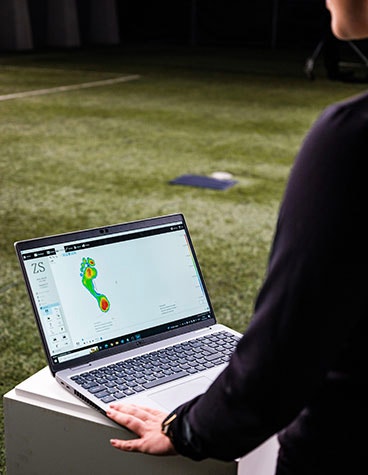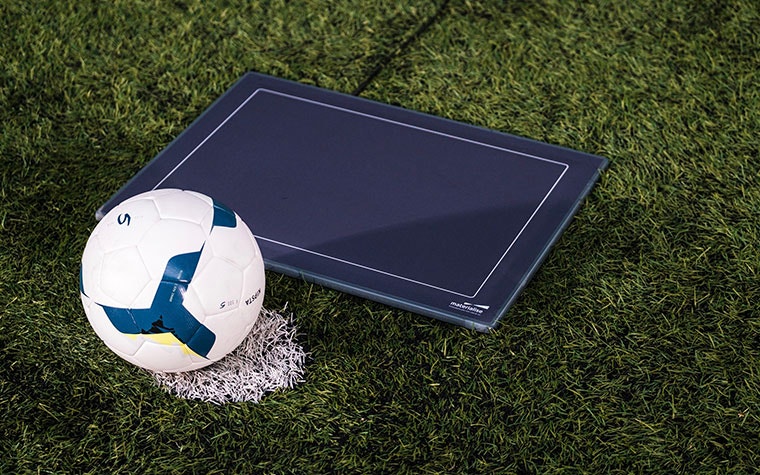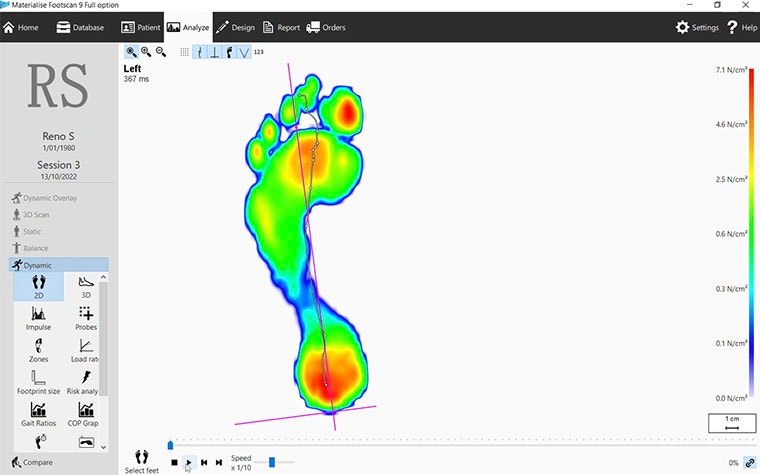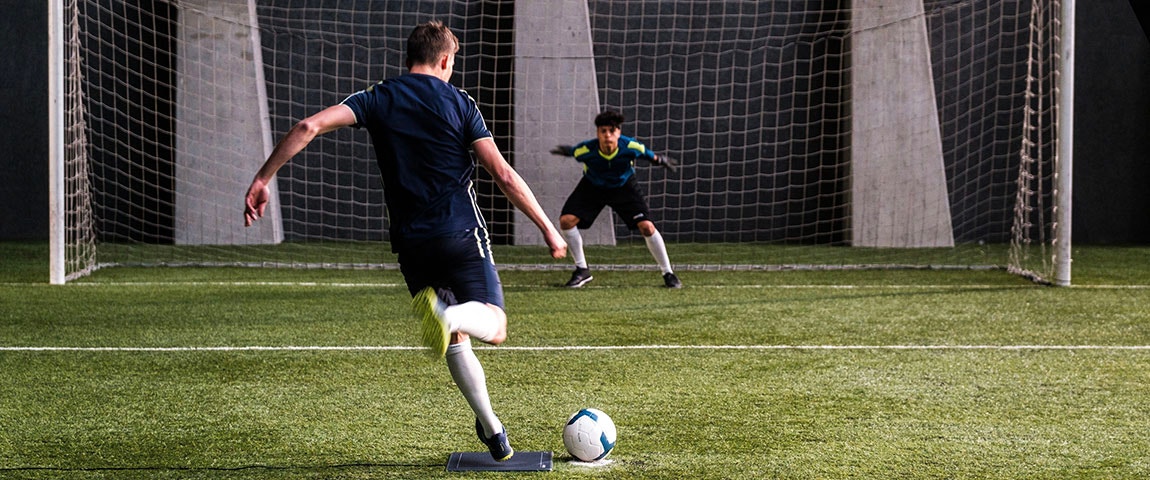PRESS RELEASE
footscan Technology Reveals Biomechanics of the Penalty Kick
November 29, 2022
footscan technology used by Ronaldo and Haaland visualizes the penalty in previously unseen detail
Leuven (Belgium) – November 29, 2022. As the world’s best football players prepare for the knock-out stages, 32 teams will dwindle down to 16, battling to make it to the quarter-finals. While there’s no telling how the tournament will unfold, the outcome of some key matches will almost certainly be decided by the dreaded penalty shootout.
Professional football teams increasingly rely on technology to optimize performance, and the penalty is no exception. Materialise Motion has unveiled a never-before-seen visualization of the biomechanics of a penalty kick using advanced footscan technology. This system offers a unique view into the crucial moment, a fraction before the ball is struck, as the supporting foot hits the ground.
The footscan technology, also used by Erling Haaland and Cristiano Ronaldo is part of a data-driven revolution in football, along with wearable GPS trackers, training ground drones, and VR software. The technology visualizes the dynamic pressure and forces that take place beneath the foot and produces unique insights that cannot be detected by the naked eye or even high-speed cameras.


The biomechanics of a penalty kick
Even the best footballers miss penalties — Ronaldo and Messi have failed to convert 20% of their combined spot kicks. With the pressure of international tournaments, the miss rate climbs even higher. footscan technology is another weapon in the arsenal of top teams as they search for elusive marginal gains. The pressure plate reveals the invisible loads and forces on the standing foot when a penalty is taken, including:
- Increased speed during the gait cycle, especially mid-foot, leading to prolonged time and pressure on the forefoot, which allows the swinging foot to follow through and take the penalty kick.
- Increased load is applied to the standing leg in an attempt to stabilize and add grip pre-strike, which allows the foot to adapt to the surface and stay stable while the penalty is taken.
How the tech works
The footscan technology accurately scans an athlete’s gait and motion, with the system recording hundreds of measurements per second. Science-based software then analyses the movement and visualizes unique biomechanical information, including peak pressures, zones of risk, and the 'dynamic center of pressure.’


Clinical specialists use this information to identify areas that may be under stress and find any potential injury risks. This can help develop better-informed treatments and personalized training to reduce injury rates and improve performance. The data provided by the dynamic gait analysis can also be used to produce custom 3D-printed orthotics.
“Years of research have shown that increased loads placed on the foot can have a great impact on player welfare. If loads being placed on muscles are too high, the risk of injury can increase,” says David Brown, Podiatrist and ex-footballer at Manchester United and Hull City. “It can be difficult to measure foot pressures and movements by eye alone or even through video analysis. With footscan technology, we are able to assess gait in greater detail: analyzing forces, gait patterns, balance, stability, and ultimately, how the foot interacts with the floor. This allows us to be more accurate in our diagnosis and develop personalized treatment plans to keep athletes in the game.”
From the professional athlete to the general public
The same footscan technology used to visualize the biomechanics of a penalty was used as part of Premier League star Erling Haaland's medical when he signed for Manchester City in the summer of 2022. It was also used by a research team that discovered the science behind Cristiano Ronaldo’s unique jumping technique.
Other athletes to leverage the technology include marathon world record breaker Paula Radcliffe and British Marathon Champions Sir Mo Farah, Phil Sesemann, Charlotte Purdue, Aly Dixon, Lily Partridge, Natasha Cockram, and most recently, 2022 Champion Rose Harvey. Radcliffe credits her recovery from surgery and the extension of her running career to the fully customized, 3D-printed orthotics that were produced based on her dynamic footscan gait analysis.
Contrary to many other elite sports technologies, dynamic gait analysis is available to people from all walks of life — from amateur athletes to the casual walker. “The footscan technology is used by Podiatrists, Physical Therapists and Sports Biomechanists to better understand a patient’s foot mechanics and develop personalized treatments and training schedules to help reduce their risk of injury and improve performance,” says Roel Mannaerts, Managing Director at Materialise Motion.

About Materialise
Materialise incorporates three decades of 3D printing experience into a range of software solutions and 3D printing services, which together form the backbone of the 3D printing industry. Materialise’s open and flexible solutions enable players in a wide variety of industries, including healthcare, automotive, aerospace, art and design, and consumer goods, to build innovative 3D printing applications that aim to make the world a better and healthier place. Headquartered in Belgium, with branches worldwide, Materialise combines the largest group of software developers in the industry with one of the largest 3D printing facilities in the world. For additional information, please visit: www.materialise.com.
Materialise press contact
Share on: